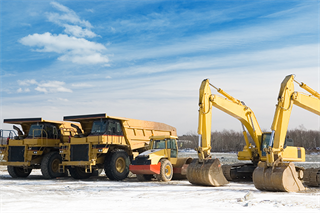Case Study: The Quandary of Mixed Fleet Telematics
 Large construction and rental fleet owners know and understand the value that telematic systems bring to their fleets such as monitoring for maintenance to better plan down-time, right-sizing the vehicle for the given job at hand and finding opportunities for training to improve operator performance. Likewise, the Original Equipment Manufacturer (OEM) collects their own data with these systems to drive innovation and design improvements as well as monitor the current generation of machines to make the next generation smarter and capable of more uptime.
Large construction and rental fleet owners know and understand the value that telematic systems bring to their fleets such as monitoring for maintenance to better plan down-time, right-sizing the vehicle for the given job at hand and finding opportunities for training to improve operator performance. Likewise, the Original Equipment Manufacturer (OEM) collects their own data with these systems to drive innovation and design improvements as well as monitor the current generation of machines to make the next generation smarter and capable of more uptime.
It is common practice for fleet owners to acquire a large fleet of mixed machine brands such as JLG aerial work platforms, Volvo pavers, McNeilus cement mixers, and National Crane boom trucks. As this occurs, issues present themselves as each OEM provides their own telematics solution. The fleet owner could then have 10 or more different cloud-based portals to manage and view all their data.
OEM suppliers of engines and chassis are starting to add their own telematics offering to the landscape for the same reasons as the machine OEM; a better understanding of the life of their components through data collection which is then utilized to create better designs in their next generation.
Without taking a holistic view of the end user’s experience, the telematics landscape becomes fragmented – requiring an ever-increasing number of locations a fleet manager needs to go to see and utilize the data from his vehicles.
Common Standards - CAN
One solution to this fragmentation resides within the J1939 protocol which is used to define common Parameter Group Numbers (PGN) for the body data so that aftermarket telematics solutions can collect the data needed by Fleet Managers. Fleet owners would then have more control over what is collected from the available data. Although, this solution comes with a tradeoff of requiring additional hardware, but it does provide a single location to visualize and utilize the data collected from the fleet.
Common Standards - Cloud
A better solution to the mixed fleet quandary is to utilize common standards like the AEMP developed ISO 15143-3 Earth Moving Machinery Telematics Data directive. This standard seeks to create a common API schema for the various back end portals to share data. This would allow fleet owners to consolidate data into a single cloud platform and view their entire fleet all at the same time.
Looking Forward
The opportunity is there for OEMs who have the end-users experience in mind. By solving this common problem for fleet managers, OEMs can differentiate themselves and gain a big advantage over their competition. Ultimately, it is up to the industry as a whole to decide and define the appropriate commonized approach so that all OEMs and/or solution providers can incorporate the agreed upon approach. Allowing both OEMs and Fleet managers to realize the true benefits of Telematics within a single solution, regardless of machine brand or provider.
Meet the Author
 Russ Farrell is the Applications Engineer Manager At HED. He leads the team that works closely with external customers to design, develop, and deploy best-in-class vehicle control and monitoring systems. Russ has over 20 years’ experience in embedded control systems in both the off highway and industrial markets. Prior to joining HED, Russ was a Software Controls Engineer at Quad/Graphics assisting in the development of industry leading finishing control systems.
Russ Farrell is the Applications Engineer Manager At HED. He leads the team that works closely with external customers to design, develop, and deploy best-in-class vehicle control and monitoring systems. Russ has over 20 years’ experience in embedded control systems in both the off highway and industrial markets. Prior to joining HED, Russ was a Software Controls Engineer at Quad/Graphics assisting in the development of industry leading finishing control systems.
